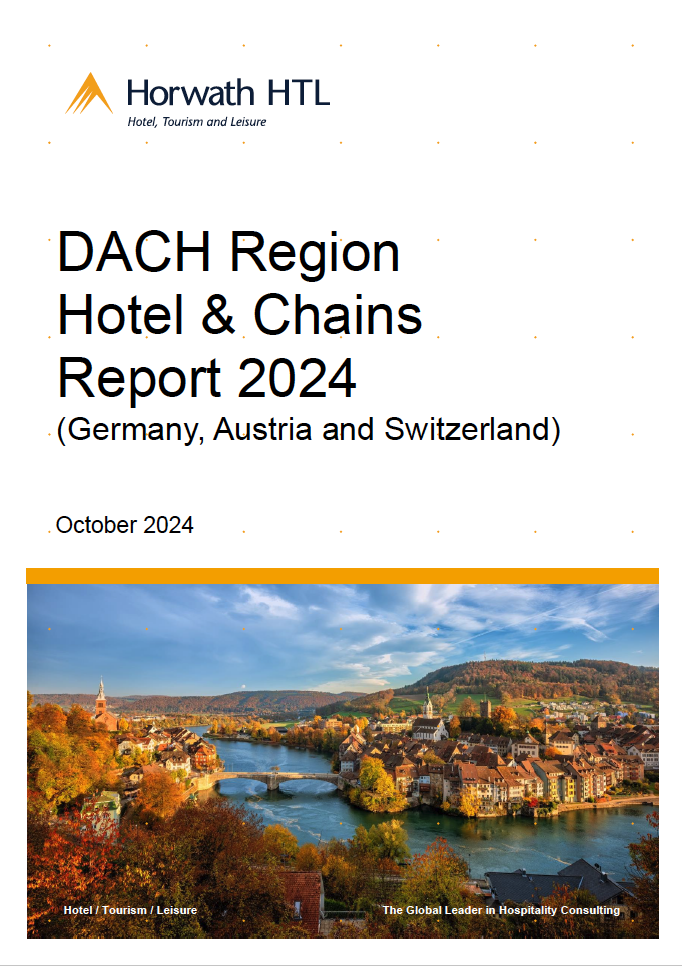
Hotels & Chains Report
DACH Region Hotels & Chains Report 2024
October 2024
Our latest report from the German, Swiss and Austrian hotel markets.
A very warm welcome to the 2024 DACH Region Hotels and Chains Report.
When we first started creating these reports in 2017, our underlying thesis was the inevitability of The Brand. Our supposition was that the mass Branding of European hotels was only a matter of time and that, sooner or later, we would end up with the sort of percentages we have seen in the United States.
So, is this happening and is it inevitable? The answer is more complicated of course.
As is so often, DACH is a microcosm of wider trends. If you examine the countries that make up the DACH region, Germany, Austria and Switzerland, they have all seen accelerated growth in the number of branded hotels over the past 12 months. Germany grew by 5%, almost 20k rooms, and branded hotel rooms now make up over 40% of the market, a significant number. It’s a similar story in Austria with 7.7% growth, Chain room penetration of almost 20% and more in the pipeline. Switzerland, so long the land of smaller, independent hotels now has over 30% branded hotel rooms. The question is, how sustainable is this, and is this going to continue?

This is where the picture becomes more complicated. Strange things have been happening in the world of brands in the last 24 months, an acceleration, proliferation even of new brands have been streaming into the market. Some of these brands are off the shelf products from the United States that haven’t made it over, but plenty of them are brand-new.
This presents something of a dilemma for the owning community, are you willing to risk taking on a brand with no track record just to be part of a wider ecosystem? If you are not able to get a signature brand for whatever reason, are you comfortable with a brand far less understood in the market? Why is this happening? Why are there so many brands?

One of the issues can be found in the (stock) market incentives for branded hotel companies. Analysts want growth, and they are not fussy as to what kind, just as long as you are growing. Net asset growth, or net unit growth, puts these companies under huge pressure to expand, with not a huge emphasis on the quality of the deals being done.
Some brands, Hyatt for example, have been putting their money where their mouth is by making a series of acquisitions. For the others, there seems to be hotel management agreement fatigue, with many owners feeling that they will make more money running these brands themselves, or through third party management companies.
Brands have responded by leaning fully into franchise models to compensate, at the same time as releasing new brands into the market in the hope that owners will see the value in even more segmentation that might give them an edge. Unfortunately, many of these brands will never get market traction and the effect is counterproductive as markets struggle to understand what these brands mean or whether they will be successful.
Certainly, we are entering a more confused world. Where there once was clear blue water between owners and operators, it’s now much harder to tell. We are seeing the rise of muti headed companies that own, operate, manage, franchise and lease, often with multiple brands across several companies. The strategy is unclear, but this approach can be nimble and optimal in getting deals done.
It certainly feels as if we have entered a time where the careful choosing of the right product for the market is less important than getting the deal done and a flag in the ground. This might be the sign of significant changes to come as the industry comes full circle to local products and local ownership.
Download the report
For detailed charts, graphs, and further analysis, download the full report here







